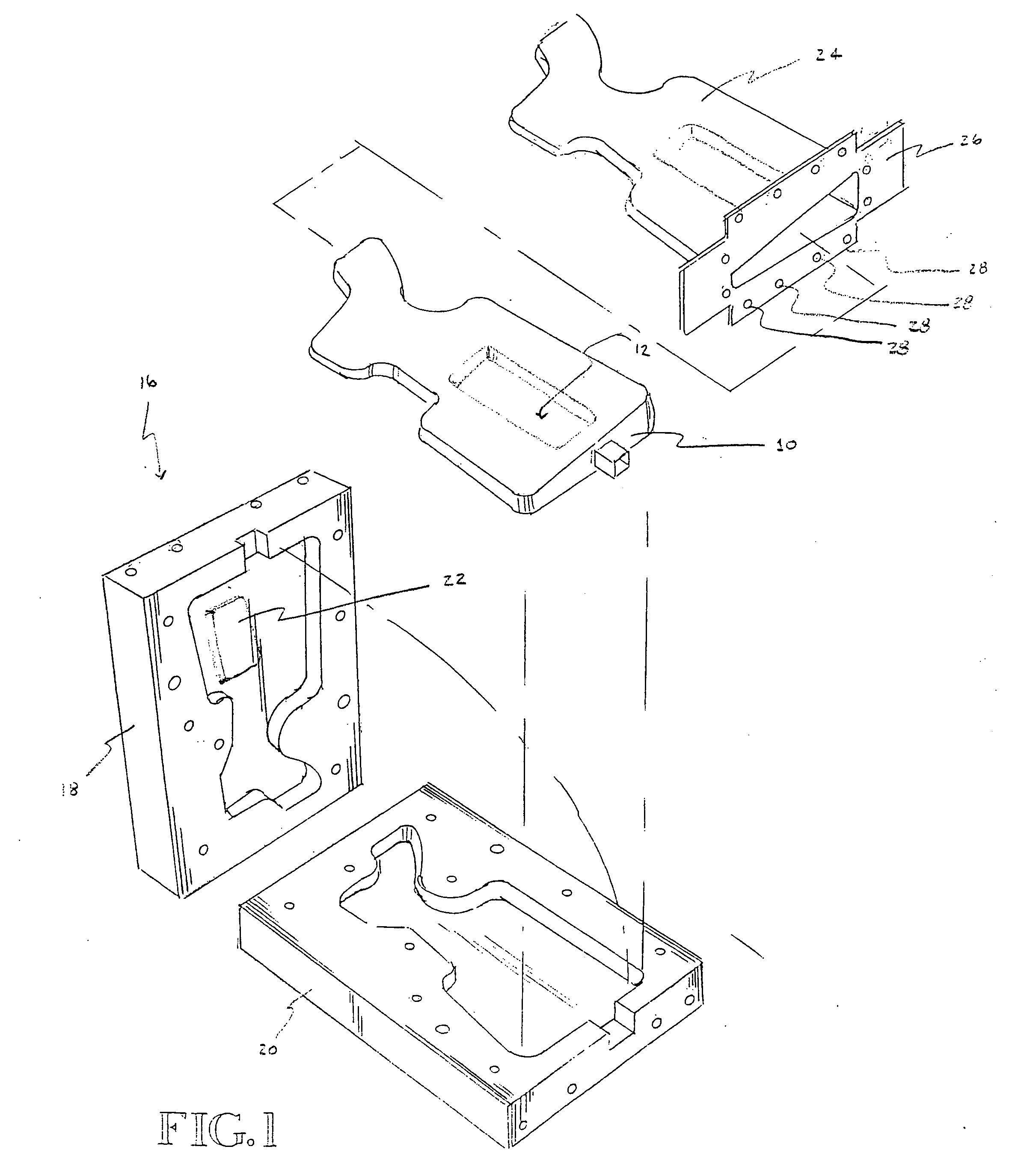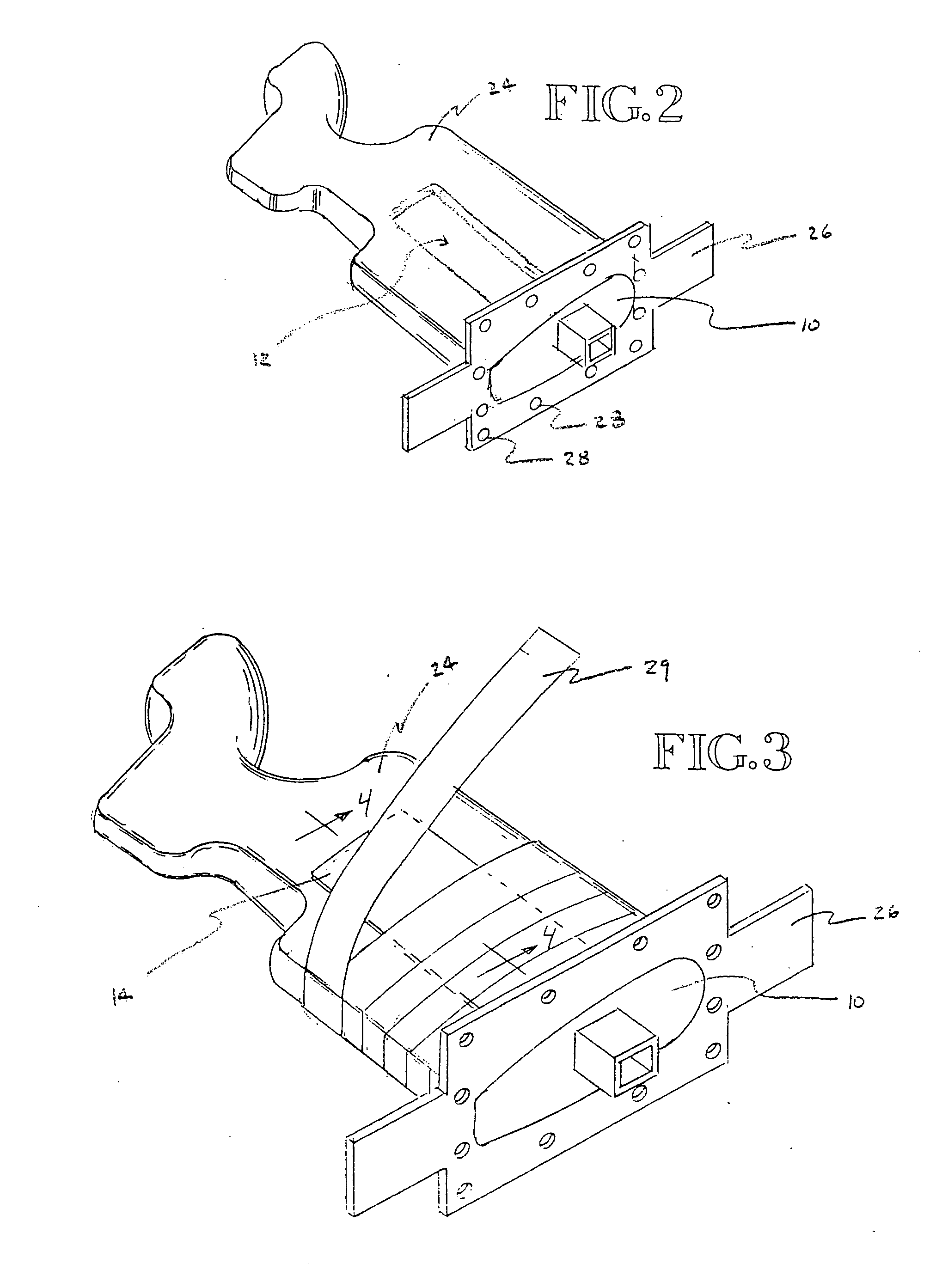Methods for forming fiber reinforced composite parts having one or more selectively positioned core, structural insert, or veneer pieces integrally associated therewith
a fiber reinforced composite material and selective positioning technology, applied in the field of hollow fiber reinforced composite material components and parts, can solve the problems of little advancement in the field of methods for forming hollow composite material components or parts, little development in the field of methods for forming hollow composite material parts, and the method is not entirely satisfactory for forming high-precision parts with exact specifications and tolerances
- Summary
- Abstract
- Description
- Claims
- Application Information
AI Technical Summary
Benefits of technology
Problems solved by technology
Method used
Image
Examples
Embodiment Construction
[0019] As noted above, the present invention relates generally to methods for forming hollow components and parts made of fiber reinforced composite materials and, more specifically, to hollow fiber reinforced composite material parts having one or more selectively positioned core, structural insert, or veneer pieces integrally associated therewith. As is appreciated by those skilled in the art, a composite material part is generally made by molding a plurality of fibers together with an appropriately selected resin. Within the context of the present invention, the plurality of fibers may be woven together so as to form a yam, a fabric or a cloth such as a braid (all of which are encompassed by the term “fiber material”). The principal fibers and fiber materials useful in the context of the present invention include those made of glass (preferably S-glass or E-glass), KEVLAR, carbon, boron, or silicon carbide. In addition, the principal resins include thermoplastic resins such as, f...
PUM
| Property | Measurement | Unit |
|---|---|---|
| Temperature | aaaaa | aaaaa |
| Time | aaaaa | aaaaa |
| Pressure | aaaaa | aaaaa |
Abstract
Description
Claims
Application Information
 Login to View More
Login to View More - R&D
- Intellectual Property
- Life Sciences
- Materials
- Tech Scout
- Unparalleled Data Quality
- Higher Quality Content
- 60% Fewer Hallucinations
Browse by: Latest US Patents, China's latest patents, Technical Efficacy Thesaurus, Application Domain, Technology Topic, Popular Technical Reports.
© 2025 PatSnap. All rights reserved.Legal|Privacy policy|Modern Slavery Act Transparency Statement|Sitemap|About US| Contact US: help@patsnap.com



